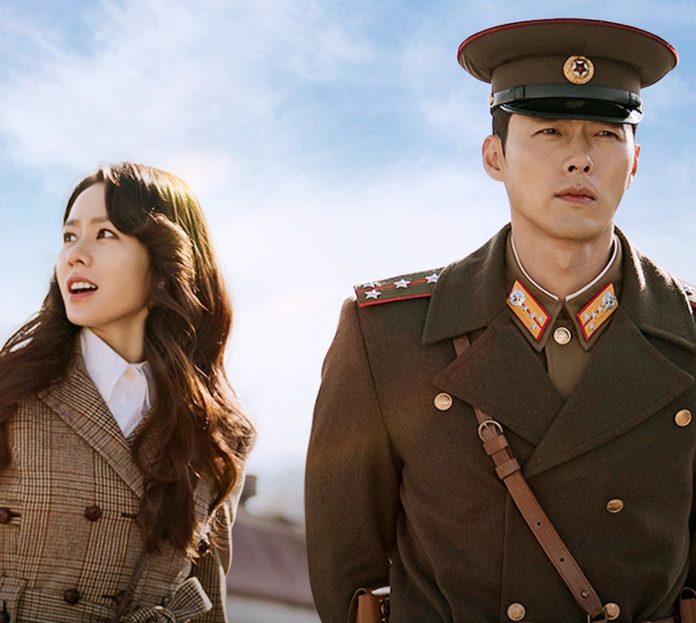Pete Mason, Newham and East London Socialist Party
Kim Jong Un, North Korea’s ‘Supreme Leader’, hit the news in February with a declaration that the county was abandoning its long-cherished desire for peaceful reunification of the Korean peninsula.
Hundreds of thousands of families were torn apart by the division of Korea. They cannot visit each other. North Korea is completely closed to the rest of the world. Even the internet has not penetrated its borders (with a few elite exceptions).
With this in mind, a drama which portrays in extraordinary detail the daily life of the ordinary people of the North, advised by several North Korean defectors, makes fascinating viewing.
It is perhaps not surprising that the 2020 South Korean Netflix drama became the highest-rated South Korean tvN network drama, and is ranked the fourth-highest terrestrial TV drama in the country. It was also well received internationally.
Korea was divided in a 1948 face-off between near neighbour ‘communist’ Soviet Union and the capitalist USA, from 11,000km across the Pacific Ocean. South Korea became a client state dictatorship of the US ruling class until 1987, when a student was tortured to death by the regime and a popular uprising established modern, but still-capitalist South Korea. This long history of oppression in the South still informs the consciousness of the working class, and if there is one single message in Crash Landing on You, it is that corruption and nepotism affects both North and South.
The long arm of the US government is still visible – or rather, visible by absences in the series. The South Korean 1948 National Security Act forbids public praise or propaganda of North Korea (DPRK). The series therefore makes no direct reference to the leadership of the despotic regime which has no more in common with socialism or Marxism than did the 1948 Soviet regime the US ruling class was so afraid of.
Good vs bad?
But this is by no means a story of a good South vs a bad North. The haughty South Korean chaebol (big business) heiress – from “the 0.001% in South Korea”, she boasts – her father just out of jail for corruption, learns to love the ordinary North Korean villagers, and the soldiers she crash lands on. Falling directly into the embrace of an army captain, she faces arbitrary arrest and indefinite detention.
We see a North Korean village at dawn, an ox-drawn cart, the unlit, unpaved streets entirely devoid of cars. Children march in military formation to school, chanting patriotic songs. And there is no electricity. It comes on only for the dawn’s early morning exercise routine, in the town square, announced on loudspeakers. The whole town gathers to exercise in formation.
With two hours of unreliable electricity a day, we see fridges dating from the 1940s used as cupboards. In the streets, gangs of roaming orphans, termed ‘Kotjebi’, eke out an impoverished existence stealing food, with, once again, the US behind the total blockade and sanctions against North Korea – as if starving its people would enamour them to US imperialism. Instead, as clearly portrayed, it has created an ossified regime, with its 1940s-made equipment and even hair styles, an eternal kicking post for US capitalism, notwithstanding the fleeting Donald Trump ‘love affair’ with Kim Jong Un.
The scarcity of food is often indicated, but the comedy-drama series portrays a spirited people in a perpetually stalemated war against the capitalist west, and no one denies the true situation is worse – even Kim Jong Un admitted this January to a new, severe famine.
Military tensions are felt throughout the series, the overwhelming fear of arbitrary arrest informing the plot at all times. South Koreans will guess why our heroine’s planned escape by sea is thwarted by a sudden, unexplained coastal lockdown – the eternal US ‘joint’ naval exercises, one of the largest annual military exercises in the world, right on North Korea’s doorstep, with South Korea in tow, throwing the DPRK into panic. And it is the imperious US ruling class that is behind the refusal to agree even to a ceasefire, with the compliance of the South Korean ruling class.
Combining everything from slapstick humour to shocking tragedy, replete with the usual K-drama tropes, this drama touches ordinary Koreans’ yearning for reunification, often mentioned in the series. The only mild criticism I have is that the piano music featured in a key subplot is uninspiring.
The series was popular in the USA, and a US version is under discussion. Commentators envisaged a Mexican heiress accidentally paragliding into the USA and being forced to go into hiding in the desperate US slums for fear of arbitrary arrest and indefinite detention. Hmmm.







